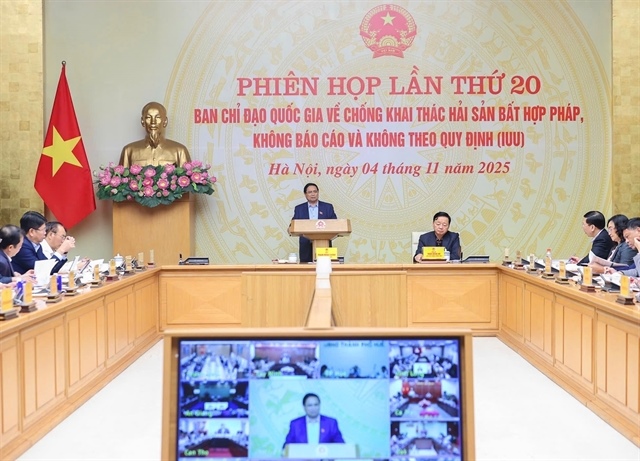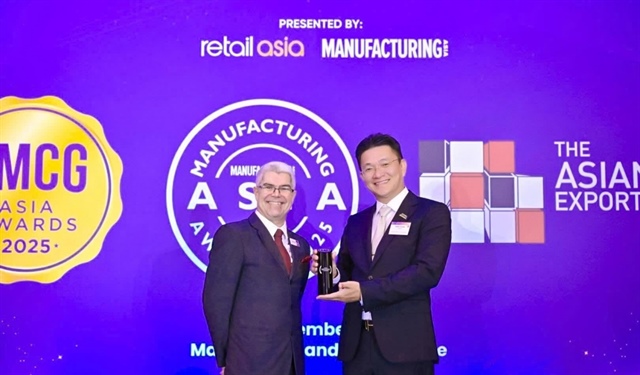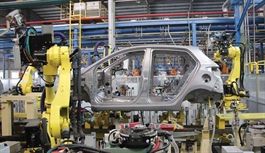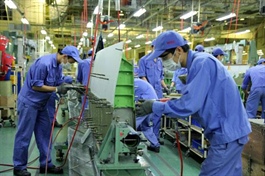Vietnam remaining a destination of vast promise for manufacturers
Vietnam remaining a destination of vast promise for manufacturers
In the last few years, Vietnam has quickly become a rising manufacturing and investment destination because of its strategic location and advantages in shipping and competitive labour and production costs. In comparison to neighbouring countries, Vietnam stands out with international airports, seaports, and rail connections that facilitate production flow and transportation.
The country remained its economic and manufacturing momentum even during the last two years. In comparison to 2020, in 2021, the industry’s total added value grew by 4.82 per cent. In which, the manufacturing sector rose by 6.37 per cent, contributing 1.61 per cent to the economy’s total growth.
Last year, despite the temporary disruptions in the connection between domestic manufacturing enterprises and the global market, the proportion of manufactured goods in total value exports maintained a contribution of more than 85 per cent, mostly due to high-tech items with excellent growth rates such as phones and components, that went up 12.4 per cent; electronics, computers, and components (up 14.4 per cent); and machinery and equipment (up 41 per cent).
Manufacturing dominance
In addition, manufacturing also attracted foreign direct investment (FDI). So far, foreign cash has flown into 18 of Vietnam’s 21 economic sectors. As with the previous year, the manufacturing and processing sector led the way, accounting for more than $18.1 billion in investment capital or 58.2 per cent of the total.
A growing number of multinational corporations have developed or relocated manufacturing operations to Vietnam. In 2021, investors from 106 countries and territories invested in Vietnam. As in the previous year, Asian markets accounted for the lion’s share of FDI. Singapore led the way, accounting for more than 34.4 per cent of the total capital, an increase of 19.1 per cent over the same time of 2020. South Korea came in second with $5 billion and Japan was third with $3.9 billion, while China, Hong Kong, and Taiwan rounded out the top five.
Northern and southern Vietnam attracted various manufacturing sectors with their differentiated labour pools, industrial mix, and infrastructure. The north is recognised for heavy manufacturing, oil and gas, electronics, and high-tech sectors. On the other hand, traditional industries such as garments and textiles, are drawn to the southern region. The quantity of projects indicates that foreign investors are still focused on larger cities with adequate infrastructure.
There are several factors that have led to the recent strong growth of the manufacturing sector in Vietnam. First of all, Vietnam is well known as a low-cost manufacturer with competitive labour costs. Although China is positioned as the largest manufacturing hub in the world, labour costs in China are already over twice as high as in Vietnam, and multinational corporations will be more inclined to explore more cost-effective Southeast Asian markets like Vietnam. According to research published on German data provider Statista, Vietnam’s local manufacturing wages are $2.99 per hour on average, while in China, this value amounts to $6.50 per hour of labour. Further, the variety of free trade agreements (FTA) is also an important factor that drives the manufacturing industry. Some key deals are the EU-Vietnam FTA, the UK-Vietnam FTA, the Comprehensive and Progressive Agreement for Trans-Pacific Partnership, and the recent Regional Comprehensive Economic Partnership.
As a result of these FTAs, Vietnam could take advantage of lower tariffs to encourage exporting enterprises to produce in the country and export to markets outside of ASEAN.
Moreover, as a result of the consequences of China’s trade tensions with the United States, Vietnam has been attractive to investors looking to relocate their manufacturing operations away from China, drawing more investment to make capital-intensive consumer goods and being able to fully leverage its manufacturing capabilities.
Finally, the sector has benefited from government incentives. The government established a goal in Resolution No.115/NQ-CP issued in 2020, that by 2025, Vietnamese enterprises will be able to manufacture goods in supporting industries that are highly competitive, meeting 45 per cent of the local demand for production and consumption.
Offering incentives
Last year, the government issued Decree No.57/2021/ND-CP which supports industries that supply raw materials, spare parts, and components to the manufacturing sector. The tax savings resulting from the decree’s implementation will give financial assistance to businesses that have been harmed by the pandemic.
Furthermore, in the form of corporate income tax, Vietnam has provided many incentives and tax breaks for large manufacturing projects with the investment capital of over $260 million and incentives in high-tech zones, selected industrial zones, and challenging socioeconomic regions.
Besides those key drivers, the manufacturing sector is still facing numerous challenges. For instance, even though the labour costs in Vietnam are competitive, the availability of skilled and qualified workers in the country is inadequate to satisfy demand. In a number of sectors, many businesses find it difficult to fill middle-management positions.
Another challenge is that the complicated legal environment may interfere with and falter foreign investors. Also, the long and cumbersome administration process of local officials could consume more time than expected.
Before embarking on a manufacturing project, foreign investors should thoroughly research the local market, do due diligence, and take counsel from a professional firm.
























